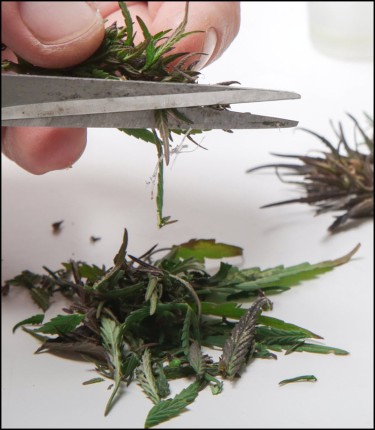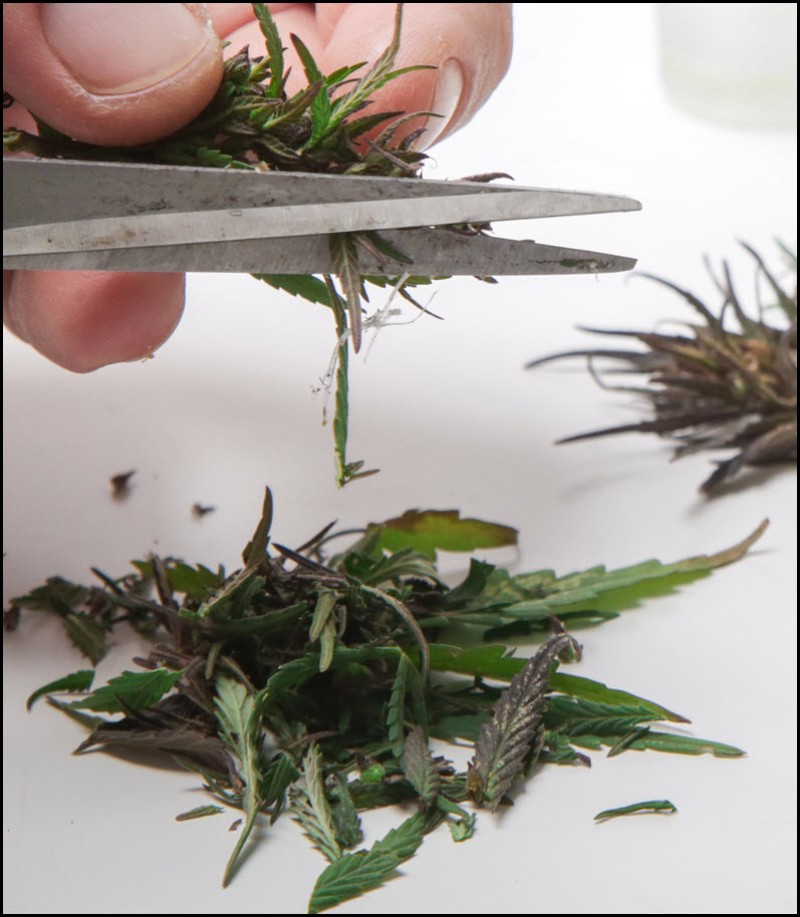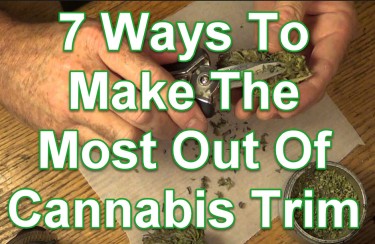
Cannabis plants have so much to offer. From the point of processing to packaging, each product and by-product have characteristics that can be exploited for better profit. It is not a secret that so much money can be made from this industry, but first, it's crucial to know all there is to know about the business angle and the product itself.
A lot of time and effort is invested in producing and processing cannabis nuggets. Farmers carry out activities like tending, trimming, and weeding before the plants are harvested. More trimmings are done before the products are packaged. Everyone in the cannabis industry has their own roles, risks, and skillsets essential in turning the plants into profit.
A visit to a cannabis farm will give you an insight into how operations are carried out during and after cultivation.
What is Cannabis Trim?
Cannabis trim is often classified as waste because very few people know how to utilize them. Most of the time, producers say the trims are unwanted by-products. However, they are wrong. With a bit of effort and proper knowledge, you could flip those unwanted materials into some valuable products. A large profit can be generated from these materials, so don't toss them out in haste. Instead, use them.
Trimming makes a plant—fruits, vegetables, or herbs—presentable for sale. All the nugs you purchase at dispensaries, even the veggies, and fruits in stores, have been gussied up. Customers will hardly find a plant that has just been ripped from the ground appealing. Irrespective of how hard it is to grow, harvest, and process a crop for sales, it will be trimmed. The trimming process is an essential factor that determines the value of your nuggets. A lousy trim will put buyers off.
The valuable trim referred to in this article are those cut off after harvest. These trimmings include kief, trichomes, sugar leaves, fan leaves, and tiny bits of buds. Trims are usually referred to as "waste" because they have low cannabinoid content. Farmers explain that these excess plant materials have to be removed to reduce the plant's moisture content as well as give it a unique shape for marketing appeal. They are low-quality materials and are not as potent as bud.
The Extraction Process
Cannabis trim possess varying amounts of cannabinoids, terpenes, and plant nutrients. The sugar leaves and fan leaves contain a decent amount of cannabinoids, while the water leaves retain various terpenes and plant nutrients.
There are different ways to extract THC and other compounds from the trims. Some involve using an open-and-closed loop solvent like propane; others use extraction systems involving dry ice, CO2, alcohol, or ice water.
It is necessary to exercise caution when using an open-loop system because it could cause exploration depending on the level of impurities in the trims. The safest systems cost a lot to operate. For instance, a safe, closed-loop extractor costs up to $100,000 or more. To determine the best method for your operations, you need to examine the amount of cannabis trim available and the best extractor that best suits the materials.
A closed-loop extractor will take at least a day to fully extract 20 pounds of trim of their useful compounds—exercise caution by sticking to the recommended load amount. Using an alcohol or water distillation method could take as long as nine days for the same quantity of trim.
The Valuable Extract
The product gotten from the extractors is like a gooey liquid. Next is to lay it out on wax paper in different pan sizes to make wax or honeycombs. This wax will have an eggshell color when dry and will crumble easily.
To make the product appear bigger, you can stir or whip up the extract rapidly for a few minutes before laying it out on the paper.
The purest extracts are obtained from solvent-based extracting systems. These products usually have a higher CBD or THC content, as well as a substantial amount of terpenes. The best delivery system for this product is vaping. On the other hand, extracted products from non-solvent systems are sold as kief mud, also called bubble hash. They are oftentimes darker in color but still have a decent level of THC. Some prefer these products over solvent-based products due to their distinct hash flavors.
Other Important Information
Before attempting to smoke or vape the extract, there must be a set time for it to set. Within this time, the excess gases in the solvent, water, or alcohol used will be released. It is best to wait at least 36 hours for the new product to get cured before consuming it. The health risks that may occur if this advice is ignored include cancers, throat damage, lung conditions, and other injuries that could occur due to dab rig explosions.
Among the potential products, wax is the least consistent. If left too long, it gets drier and harder to work with. The remarkably light and readily crumbling waxes can also be challenging to deal with, and many valuable crumbs are lost in the process.
Shatter is the most consistent and valuable concentrate. This doesn't excuse the fact that it also becomes less stable with time. Depending on how long it's been cured, it could either be hard or chewy.
Other Purposes for Cannabis Trims
Not everyone prefers to extract these materials' valuable compounds and nutritious juices to make kiefs, rosins, oils, or hash. Cannabis trim can also be used to make edibles, herbs, salve or cream, and compost.
Conclusion
Cannabis trim is like tiny parts of a cannabis plant, and as such, have similar features and compounds. The only problem is that the valuable compounds are in limited quantities and are less pleasant to smoke.
You can get high off your cannabis trimmings, provided they are cured or extracted the right way. If you're not sure how to store your cannabis trim until you're ready to extract them, consider freezing them or storing them in a cool, dark, and dry place in your home.
Don't forget; you could make a ton of profit from flipping these nugs into valuable and presentable by-products.
WHAT CAN YOU DO WITH CANNABIS TRIM, READ MORE...
MAKE THE MOST OF CANNABIS TRIM, HERE ARE SOME IDEAS!
OR..
WET OR DRY TRIMMING, WHAT IS THE BEST WAY TO TRIM YOUR PLANTS?








